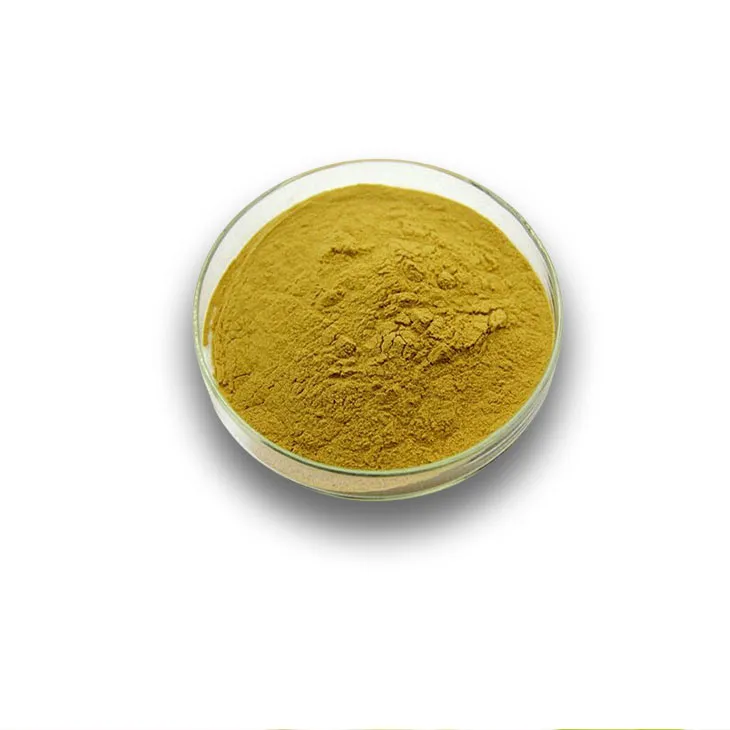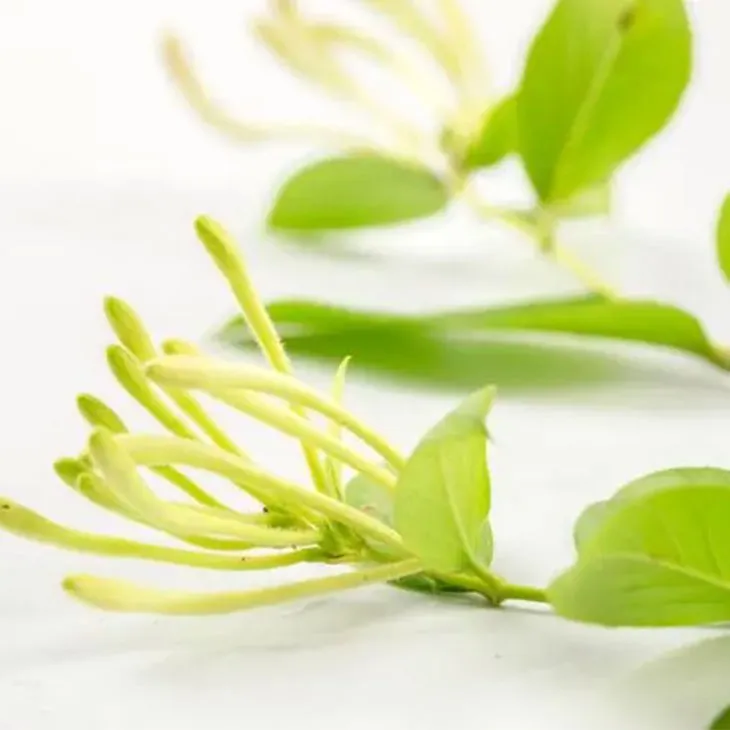- 0086-571-85302990
- sales@greenskybio.com
How to make powder from honeysuckle pollen.
2024-11-30

1. Introduction
Honeysuckle Pollen is rich in various nutrients and has potential uses in traditional medicine, cosmetics, and food supplements. Transforming it into powder can make it more convenient for storage, use, and further processing. However, it is crucial to follow proper methods, use the necessary tools, and take safety precautions during the process.

2. Tools and Materials Needed
Tools:
- A pair of fine - tipped tweezers for carefully collecting the pollen.
- Small sieves with different mesh sizes for filtering and purifying the pollen.
- A mortar and pestle or an electric grinder for grinding the pollen into powder.
- Desiccators or a drying oven for drying the pollen.
- Clean, dry containers for storing the final powder.
- Fresh honeysuckle flowers (ensure they are not contaminated).

3. Collection of Honeysuckle Pollen
3.1. Selecting the Right Flowers
The first step is to choose healthy and fully - bloomed honeysuckle flowers. Avoid flowers that are wilted, damaged, or have signs of pest infestation. The ideal time for collection is usually in the morning when the pollen is most abundant and fresh.
3.2. Manual Collection
- Gently hold the flower with one hand and use the tweezers with the other hand to carefully pick the stamens (the part that contains the pollen). This process requires patience and precision to avoid damaging the pollen grains.
- Place the collected stamens in a clean, dry container. It is advisable to use a small, shallow container to prevent the pollen from getting crushed at this stage.

4. Pollen Purification
4.1. Sieving
- Pour the collected stamens into a sieve with a relatively large mesh size (for example, around 1 - 2 mm mesh). Gently shake the sieve to separate the pollen from the larger parts of the stamens such as the filaments.
- Transfer the pollen that has passed through the first sieve to a sieve with a finer mesh size (around 0.5 - 1 mm). This will further remove any remaining debris or small pieces of stamens.
If there are still some light debris mixed with the pollen, you can use a gentle stream of clean, dry air (for example, from a small air blower) to blow away the debris while the pollen is spread out thinly on a clean surface. However, be very careful not to blow away too much of the pollen.

5. Drying the Pollen
5.1. Using a Desiccator
- Place the purified pollen in a desiccator. A desiccator is a sealed container that contains a drying agent such as silica gel. The drying agent will absorb the moisture in the air, creating a dry environment for the pollen.
- Leave the pollen in the desiccator for at least 24 - 48 hours. Check the pollen regularly to ensure that it is completely dry. Dry pollen will be crumbly and will not stick together.
- If you use a drying oven, set the temperature to a low level, usually around 30 - 40°C. Place the pollen on a clean, dry tray and put it in the oven.
- Monitor the pollen closely while it is drying. It should not be over - dried or burned. The drying time may vary depending on the amount of pollen, but it usually takes about 1 - 3 hours.
6. Grinding the Pollen into Powder
6.1. Using a Mortar and Pestle
- Place the dried pollen in a mortar. Start by gently crushing the pollen with the pestle. Apply a slow and steady pressure to break up the larger clumps of pollen.
- Gradually increase the pressure and the grinding motion. Keep grinding until the pollen is reduced to a fine powder. This process may take some time, especially if you are grinding a relatively large amount of pollen.
- If you use an electric grinder, make sure it is clean and dry before use. Place the dried pollen in the grinder.
- Operate the grinder in short bursts to avoid over - heating the pollen. Check the consistency of the powder regularly. If necessary, repeat the grinding process until you achieve a fine and uniform powder.
7. Quality Control
7.1. Visual Inspection
The final powder should be fine and uniform in texture. There should be no visible lumps or large particles. If there are any, it may indicate that the grinding process was not complete.
7.2. Moisture ContentCheck the moisture content of the powder. If the powder feels damp or sticks together, it may have too much moisture and may not store well. In this case, you may need to dry it further.
8. Storage of the Honeysuckle Pollen Powder
8.1. Choosing the Right Container
Use clean, dry, and air - tight containers for storing the powder. Glass jars with tight - fitting lids are a good option. Avoid using plastic containers that may leach chemicals into the powder over time.
8.2. Storage ConditionsStore the powder in a cool, dry, and dark place. Exposure to heat, moisture, and sunlight can degrade the quality of the powder. A pantry or a cupboard away from the stove or other heat sources is a suitable location.
9. Safety Precautions
9.1. Allergies
Honeysuckle pollen may cause allergic reactions in some people. When handling the pollen, it is advisable to wear gloves and a face mask, especially if you are allergic to pollen or have a history of respiratory problems.
9.2. ContaminationEnsure that all the tools and containers used are clean and sterilized before use to avoid contamination of the pollen. Do not use any chemicals for cleaning that may leave residues on the pollen.
9.3. Equipment SafetyWhen using an electric grinder or a drying oven, follow the manufacturer's instructions carefully to avoid electrical hazards or over - heating. Keep children and pets away from the equipment during operation.
FAQ:
Question 1: What are the basic tools needed to make powder from honeysuckle pollen?
To make powder from honeysuckle pollen, you will typically need some basic tools. A fine - mesh sieve is essential for sieving out impurities. Tweezers can be useful for carefully handling the pollen. You also need a drying apparatus, such as a dehydrator or a well - ventilated drying tray. And a grinder, like a mortar and pestle or an electric grinder, is necessary for grinding the dried pollen into powder.
Question 2: How to extract honeysuckle pollen safely?
When extracting honeysuckle pollen, it is important to wear appropriate protective gear, such as gloves and a face mask. Gently shake the honeysuckle flowers over a clean, white surface to collect the pollen that falls out. Avoid using excessive force as it may damage the pollen. Another method is to use a small brush to carefully brush the pollen from the stamens of the flowers and collect it in a clean container.
Question 3: What is the best drying method for honeysuckle pollen?
The best drying method for honeysuckle pollen is to use a low - temperature drying environment. If using a dehydrator, set the temperature to around 30 - 40 degrees Celsius. If drying naturally, place the pollen on a clean, dry, and well - ventilated tray in a dry and shaded area. This helps to preserve the integrity of the pollen and prevent it from getting damaged or losing its properties during the drying process.
Question 4: How can we ensure the purity of the honeysuckle pollen powder?
To ensure the purity of the honeysuckle pollen powder, start with clean source materials. Make sure the honeysuckle flowers are free from dirt, pesticides, and other contaminants before collecting the pollen. During the extraction process, carefully remove any foreign particles or parts of the flower that may have mixed with the pollen. After drying, use a fine - mesh sieve to further purify the pollen by removing any remaining small debris.
Question 5: Are there any safety precautions to keep in mind when making honeysuckle pollen powder?
Yes, there are several safety precautions. As mentioned before, wear protective gear like gloves and a face mask to avoid direct contact with the pollen, which may cause allergic reactions in some people. Also, ensure that the drying and grinding equipment is clean and free from any contaminants. When using an electric grinder, follow the manufacturer's safety instructions to prevent accidents.
Related literature
- Honeysuckle Pollen: Properties and Processing"
- "The Art of Pollen Powder Preparation: Focus on Honeysuckle"
- "Honeysuckle Pollen: Extraction, Drying and Powder Formation"
- ▶ Hesperidin
- ▶ Citrus Bioflavonoids
- ▶ Plant Extract
- ▶ lycopene
- ▶ Diosmin
- ▶ Grape seed extract
- ▶ Sea buckthorn Juice Powder
- ▶ Fruit Juice Powder
- ▶ Hops Extract
- ▶ Artichoke Extract
- ▶ Mushroom extract
- ▶ Astaxanthin
- ▶ Green Tea Extract
- ▶ Curcumin
- ▶ Horse Chestnut Extract
- ▶ Other Product
- ▶ Boswellia Serrata Extract
- ▶ Resveratrol
- ▶ Marigold Extract
- ▶ Grape Leaf Extract
- ▶ New Product
- ▶ Aminolevulinic acid
- ▶ Cranberry Extract
- ▶ Red Yeast Rice
- ▶ Red Wine Extract
-
Pomegranate Extract
2024-11-30
-
Apricot Powder
2024-11-30
-
Bitter Melon Extract
2024-11-30
-
Acai Berry Extract
2024-11-30
-
Fig Extract
2024-11-30
-
Tinospora cordifolia extract
2024-11-30
-
Ginseng Root Extract
2024-11-30
-
Citrus Aurantium Extract
2024-11-30
-
Artichoke Leaf Extract
2024-11-30
-
Cranberry Extract
2024-11-30





















